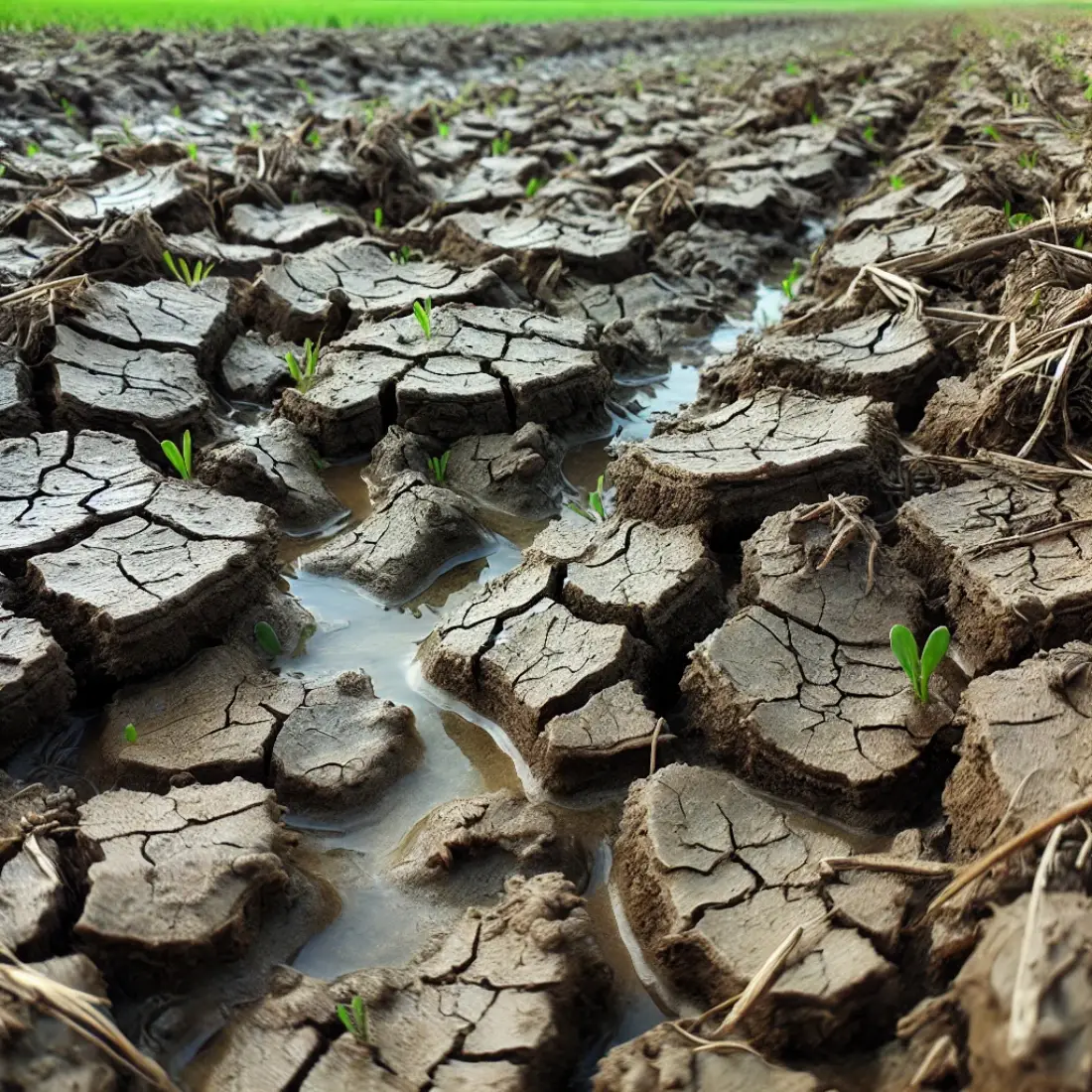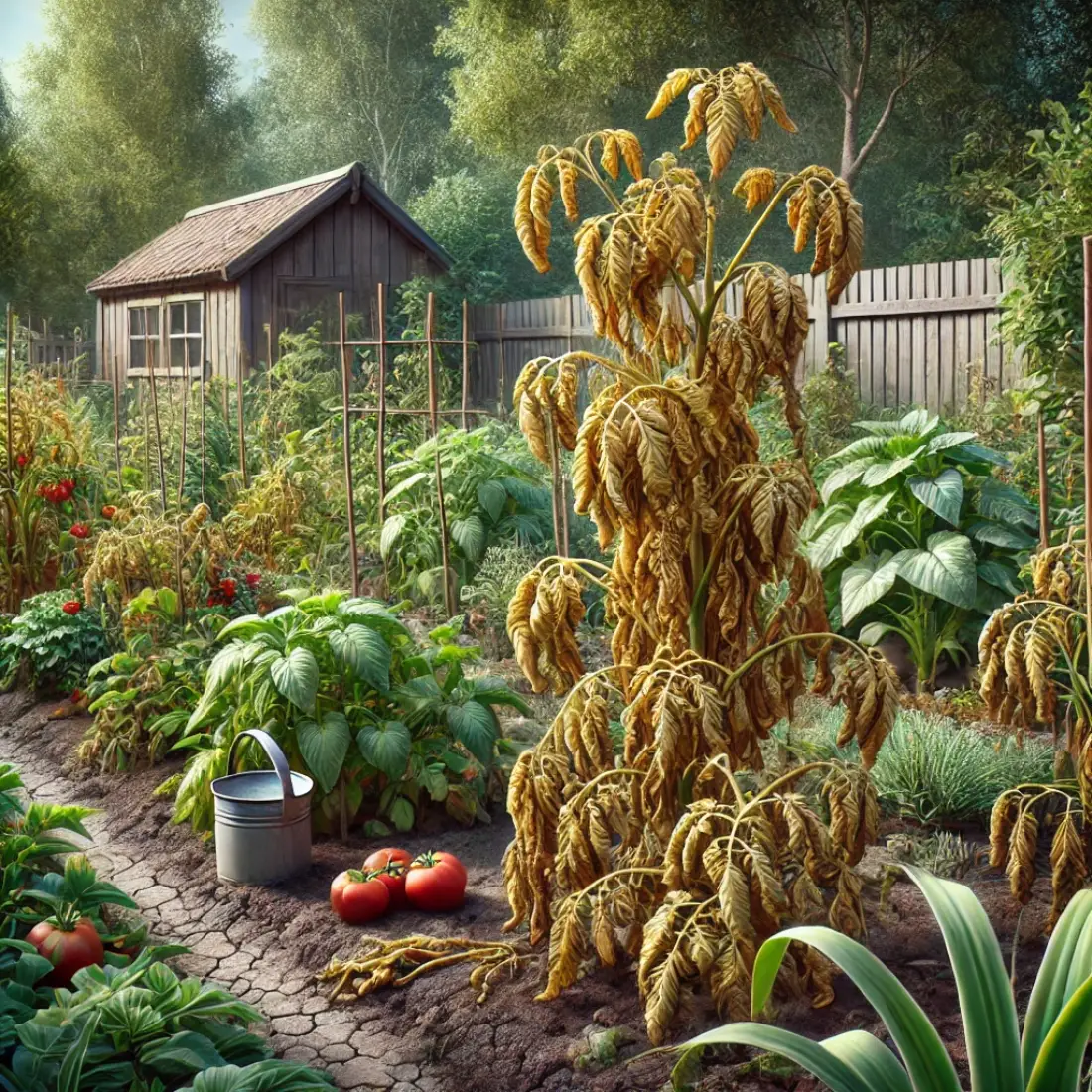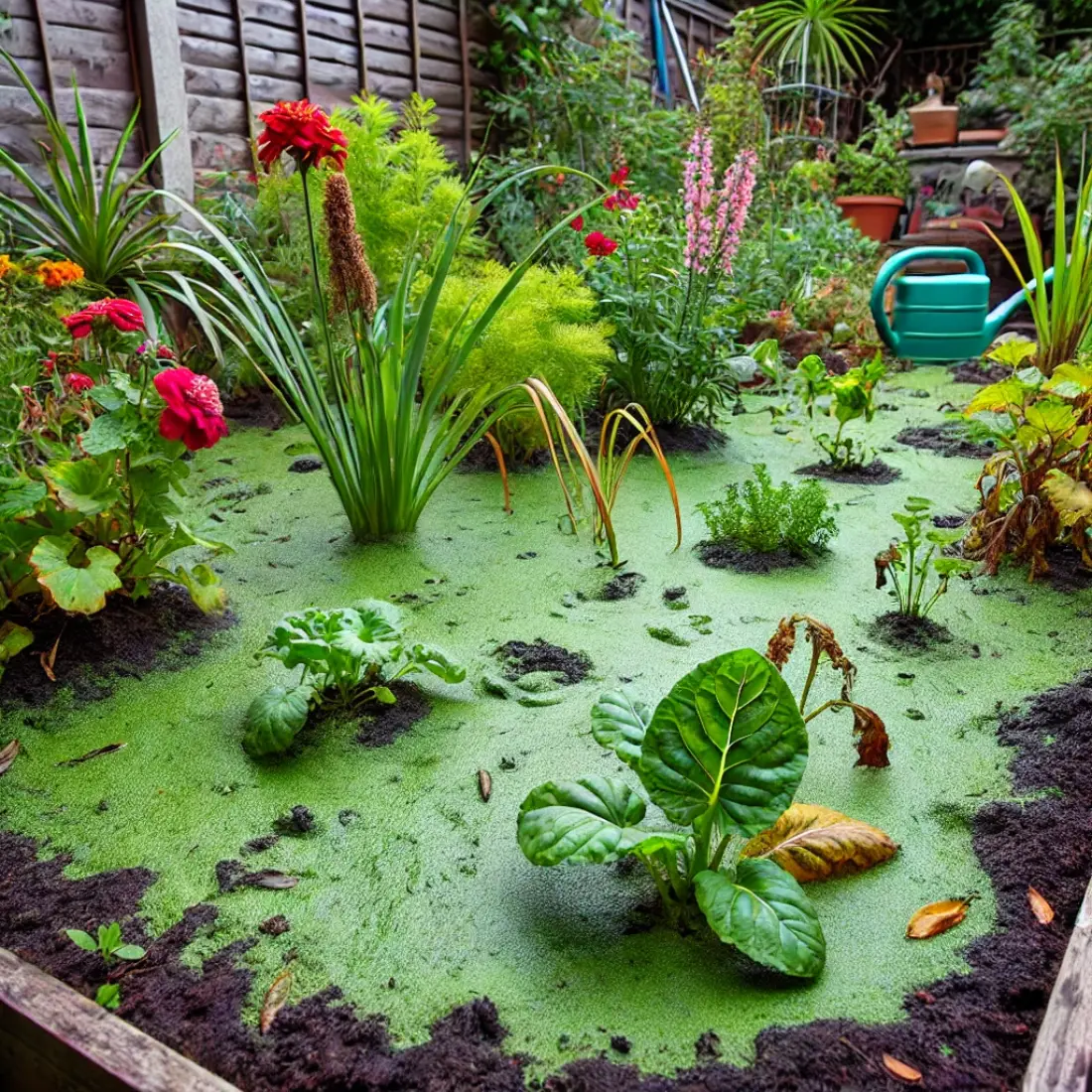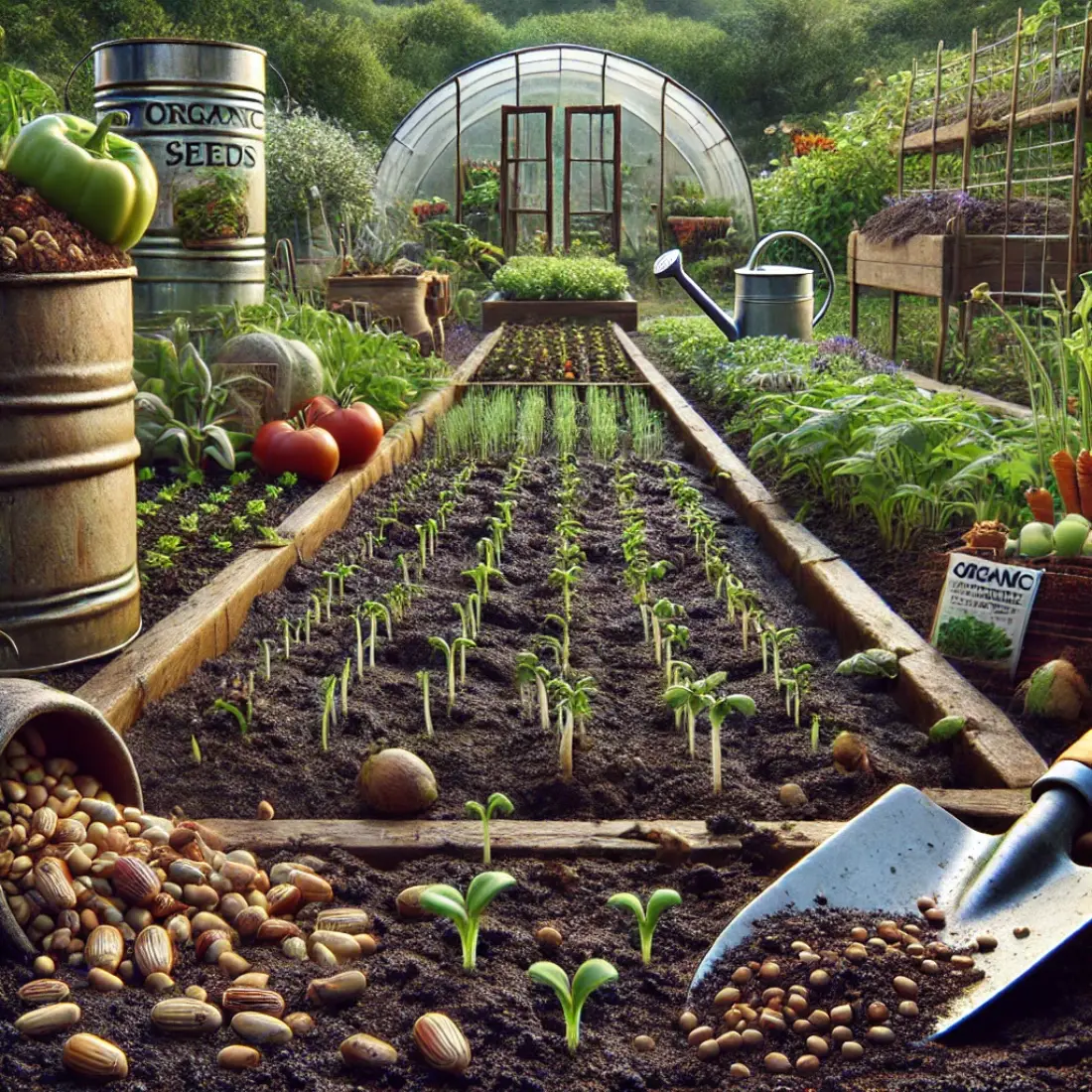A crust on the soil surface forms when soil particles compact into a hard, impermeable layer. This phenomenon, caused by factors like intense rainfall and certain agricultural practices, significantly impacts soil health and crop productivity. Soil crusts hinder water infiltration, leading to increased runoff, erosion, and poor seedling emergence, ultimately affecting crop yields.
What is a Soil Crust?
A soil crust is a compacted, often impermeable layer that forms on the surface of soil. These crusts can be physical, resulting from the mechanical compression of soil particles, or biological, created by the growth of microorganisms, algae, and lichens.
Physical soil crusts typically form when rain or irrigation water causes fine soil particles to settle and bind together. This process is often accelerated in soils with high clay content, which are more prone to compaction. Once the soil dries, a hard crust forms on the surface, inhibiting water infiltration and seedling emergence.
Biological soil crusts, also known as biocrusts, are formed by a living layer of organisms such as cyanobacteria, mosses, and lichens. These crusts play a vital role in arid and semi-arid ecosystems by stabilizing soil, reducing erosion, and enhancing nutrient cycling. However, their presence can still impact water infiltration and seed germination in agricultural settings.
Causes of Soil Crusting
Soil crusting occurs when the surface layer of soil becomes compacted and forms a hard, impermeable barrier. Several factors contribute to this phenomenon, impacting soil health and plant growth.
Soil Composition and Texture
- Soils high in fine particles, such as silt and clay, are more prone to crusting.
- These particles can easily bind together, creating a dense surface layer when wet.
- Sandy soils, with larger particles, are less likely to crust but can still experience compaction under certain conditions.
Rainfall and Irrigation
- Heavy rainfall can cause soil particles to settle and compact, especially if the soil lacks sufficient organic matter.
- Intense irrigation practices, particularly those that deliver large amounts of water quickly, can have a similar effect.
- Water impacts the soil surface, breaking down soil aggregates and causing fine particles to bind together, forming a crust as the soil dries.
Agricultural Practices
- Tillage can disrupt soil structure, making it more susceptible to crusting.
- Over-tilling can break down soil aggregates and reduce organic matter content, leading to compaction.
- The use of heavy machinery can also compact soil, especially when used on wet fields.
Lack of Organic Matter
- Organic matter helps improve soil structure by promoting the formation of stable soil aggregates.
- Soils with low organic matter content are more likely to experience crusting because they lack the cohesive forces that prevent particle compaction.
- Organic matter also supports microbial activity, which helps maintain a loose and friable soil structure.
Microbial Activity
- Certain microorganisms can contribute to soil aggregation, while others may cause compaction.
- For example, cyanobacteria and algae can form biological crusts on the soil surface, which can reduce water infiltration.
- Conversely, beneficial microbes like mycorrhizal fungi help improve soil structure and reduce crusting.
Impacts of Soil Crusting on Plants
Soil crusting has several detrimental effects on plants, impacting their growth and overall health.
Reduced Water Infiltration
- Soil crusts create a hard, impermeable layer on the soil surface, which prevents water from infiltrating the soil effectively.
- This leads to increased runoff, reduced soil moisture, and inadequate water supply to plant roots.
Hindered Seedling Emergence
- The hard crust makes it difficult for seedlings to break through the soil surface.
- This results in poor seedling emergence, reducing plant population density and ultimately affecting crop yields.
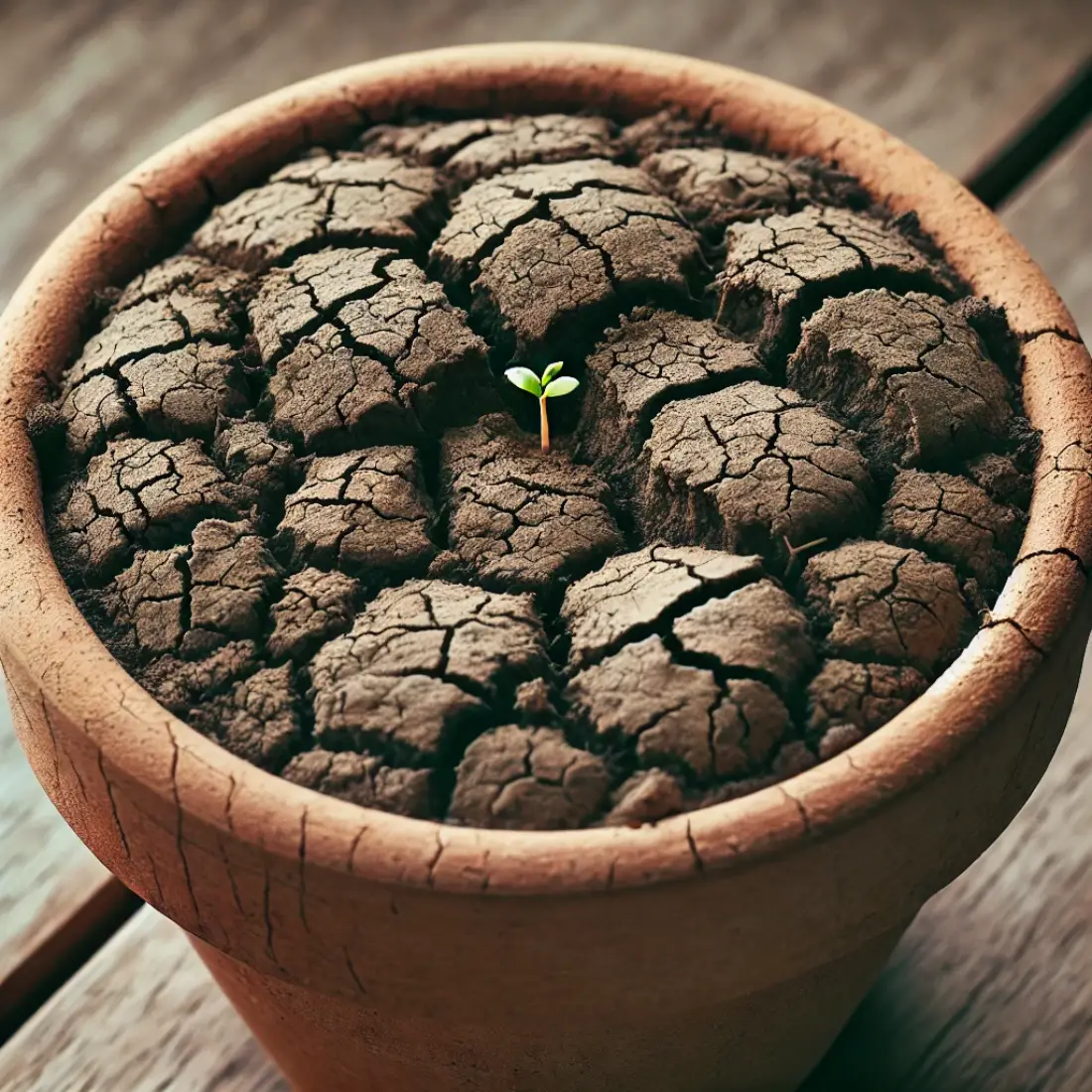
Increased Soil Erosion
- Crusted soil is more susceptible to erosion because water runoff removes the topsoil.
- Soil erosion depletes the nutrient-rich top layer, impacting soil fertility and plant growth.
Impaired Root Growth
- Soil crusts limit oxygen availability in the soil, affecting root respiration.
- Impaired root growth leads to reduced nutrient uptake, stunting plant growth and development.
Reduced Soil Aeration
- Soil crusts restrict air exchange between the soil and atmosphere, leading to poor soil aeration.
- This negatively affects microbial activity and the overall soil ecosystem, further impacting plant health.
Organic Methods of Management and Prevention of Soil Crusting
Managing and preventing soil crusting through organic methods is essential for maintaining soil health and promoting sustainable agricultural practices. Here are some effective organic strategies:
Mulching
- Applying a layer of organic mulch, such as straw, grass clippings, or leaves, helps protect the soil surface from rain impact and reduces the formation of soil crusts.
- Mulch retains soil moisture, promotes better water infiltration, and improves soil structure over time.
- As mulch decomposes, it adds organic matter to the soil, enhancing its fertility and microbial activity.
Cover Cropping
- Planting cover crops, such as legumes, grasses, or clovers, during off-seasons prevents soil crusting by maintaining continuous ground cover.
- Cover crops protect the soil from erosion, improve water infiltration, and increase organic matter content.
- Their root systems help break up compacted soil layers and enhance soil structure, reducing the likelihood of crust formation.
- Leguminous cover crops also fix nitrogen in the soil, improving soil fertility for future crops.
Organic Soil Amendments
- Incorporating organic soil amendments, such as compost, well-rotted manure, or green manure, improves soil structure and reduces crusting.
- These amendments increase the soil’s organic matter content, enhancing its ability to retain moisture and nutrients.
- Improved soil structure facilitates better root growth and microbial activity, preventing soil particles from binding into a crust.
- Regular application of organic amendments helps maintain long-term soil health and productivity.
Reduced Tillage Practices
- Minimizing tillage helps preserve soil structure and reduces the risk of soil crust formation.
- Reduced tillage practices, such as no-till or minimum-till, maintain soil organic matter and promote soil stability.
- These practices also protect soil microorganisms and enhance natural soil processes.
Biological Soil Conditioners
- Using biological soil conditioners, such as mycorrhizal fungi and beneficial bacteria, can improve soil structure and reduce crusting.
- These microorganisms enhance soil aggregation, improve nutrient uptake, and promote plant health.
- Integrating biological soil conditioners into soil management practices supports sustainable agriculture.
- These natural soil enhancers help create a resilient soil ecosystem that is less prone to crusting.
FAQs about Soil Crusting
What causes soil crusting?
Soil crusting is caused by the compaction of soil particles on the surface, often due to heavy rainfall, irrigation, and certain agricultural practices. Factors like fine soil particles, low organic matter, and poor soil structure also contribute to crust formation.
How does soil crusting affect plant growth?
Soil crusting impedes water infiltration, reduces oxygen availability to roots, and makes it difficult for seedlings to emerge. This can lead to poor plant growth, reduced crop yields, and increased soil erosion.
Can soil crusting be prevented?
Yes, soil crusting can be prevented using various methods such as mulching, cover cropping, adding organic matter, and employing gentle watering techniques. These practices help maintain soil structure and improve water infiltration.
What is the difference between physical and biological soil crusts?
Physical soil crusts form from the compaction of soil particles, while biological soil crusts are created by living organisms like algae, lichens, and mosses. Both types can affect water infiltration and seedling emergence but play different roles in the soil ecosystem.
How does mulching help prevent soil crusting?
Mulching protects the soil surface from the impact of water and wind, reduces evaporation, retains soil moisture, and adds organic matter as it decomposes. This helps maintain a loose, well-structured soil surface, preventing crust formation.
What are the best organic amendments to use for preventing soil crusting?
Compost, well-rotted manure, and green manure are excellent organic amendments. They increase the soil’s organic matter content, enhance soil structure, and improve water retention, reducing the likelihood of soil crusting.
How often should I aerate the soil in pots to prevent crusting?
Regularly aerate the soil in pots every few weeks to break up any developing crusts and improve air exchange and water infiltration. Be gentle to avoid damaging plant roots.
Can cover crops be used in pots to prevent soil crusting?
Yes, small cover crops or ground covers like clover or creeping thyme can be planted in pots. They help maintain soil structure, protect the soil surface, and retain moisture, reducing the chances of crust formation.
How does overwatering contribute to soil crusting?
Overwatering can compact the soil and lead to crust formation by saturating the soil and causing fine particles to settle and bind together. It also reduces the amount of oxygen available to plant roots.
What role do microorganisms play in managing soil crusting?
Microorganisms like mycorrhizal fungi and beneficial bacteria improve soil structure and enhance soil aggregation, preventing crust formation. They also promote nutrient uptake and overall plant health, contributing to a healthy soil ecosystem.

